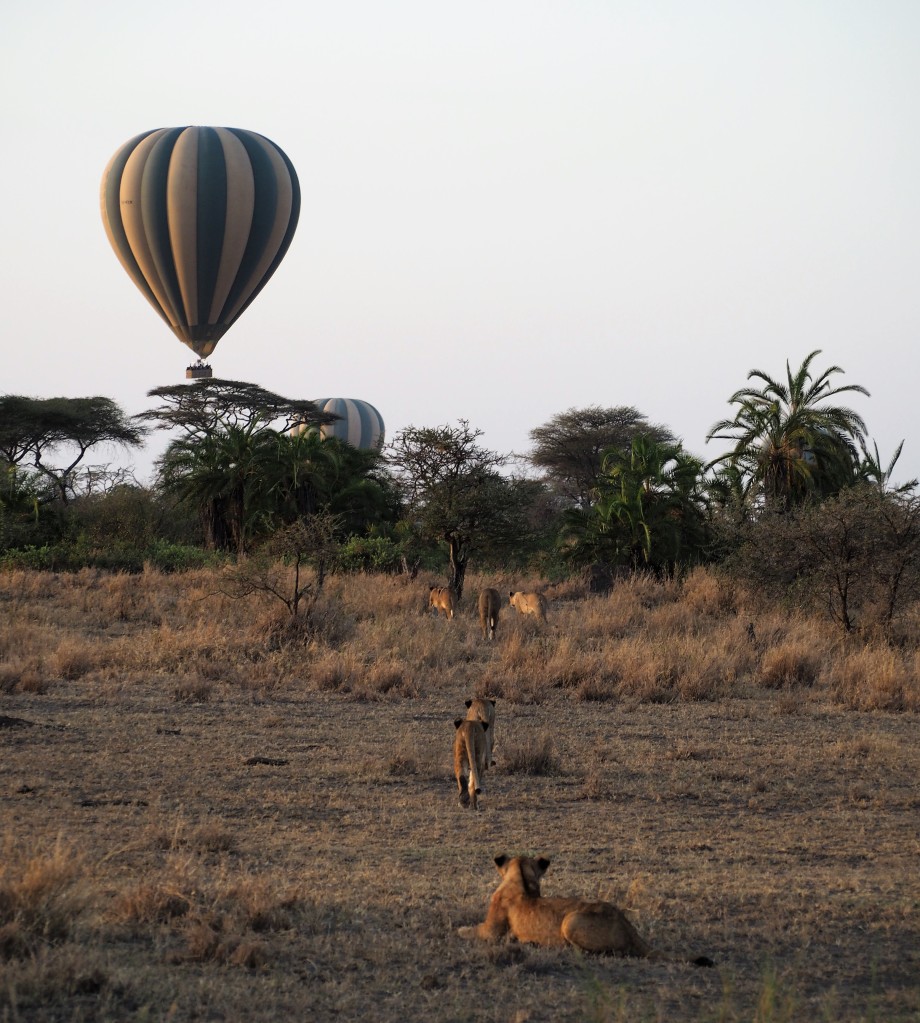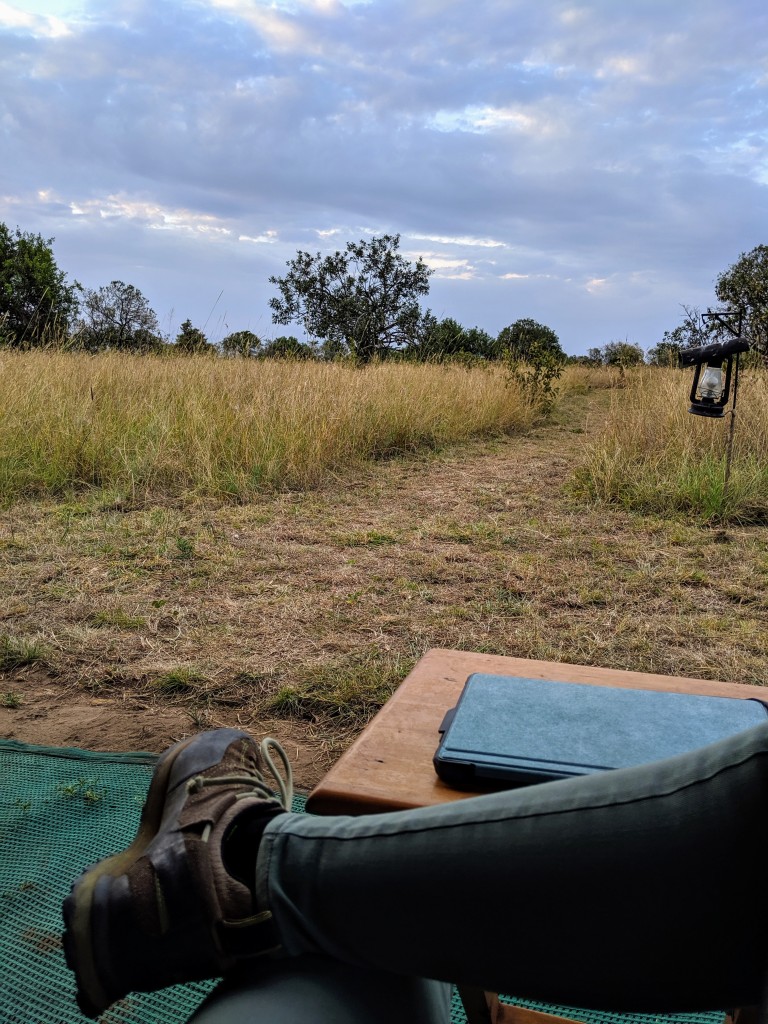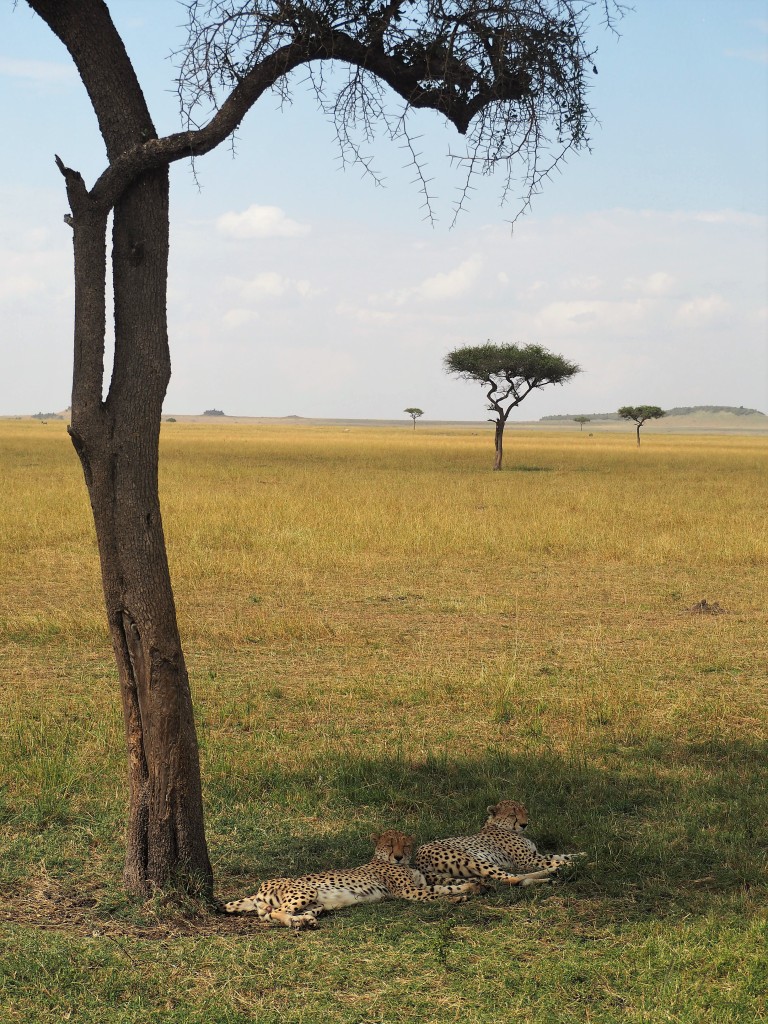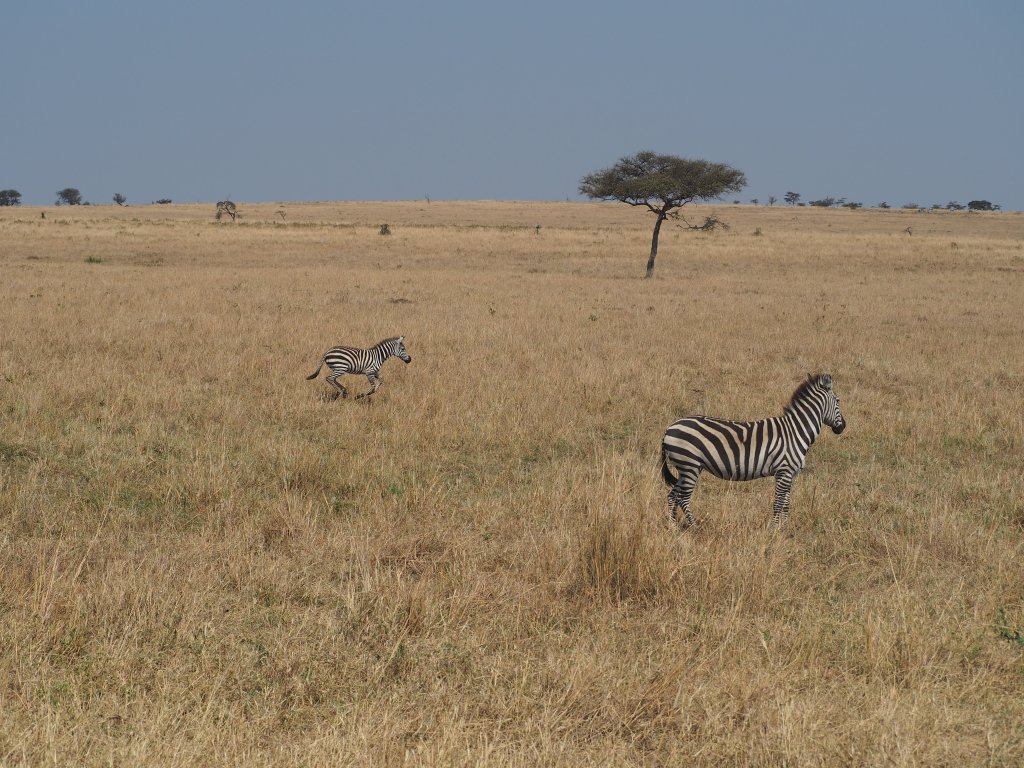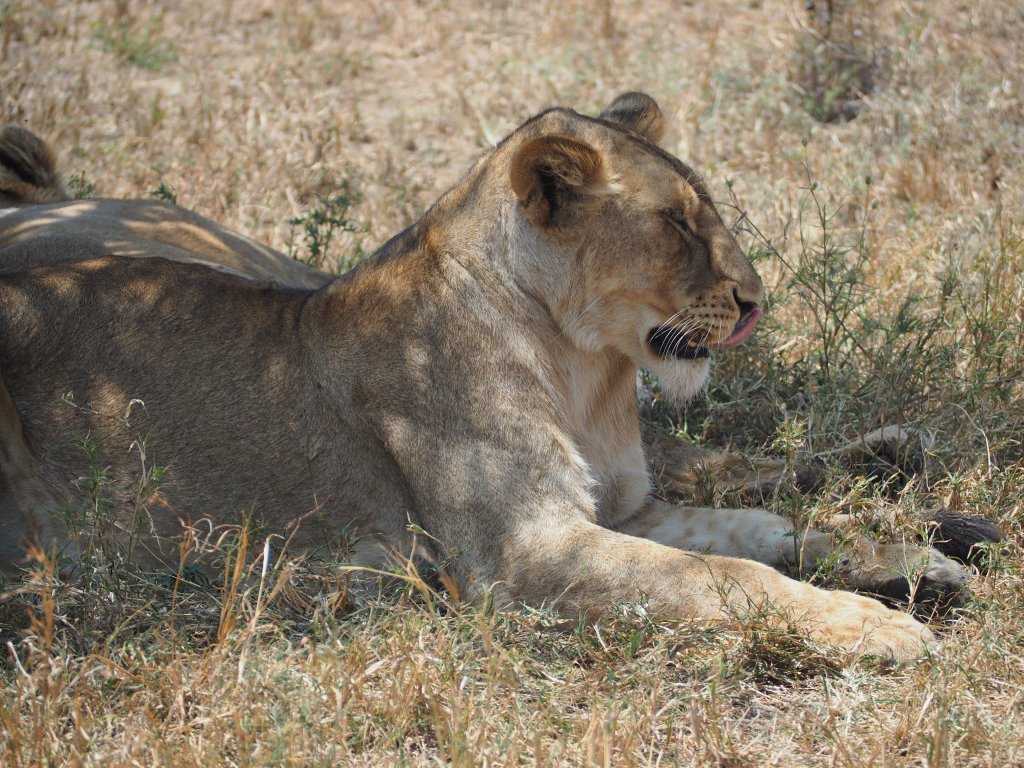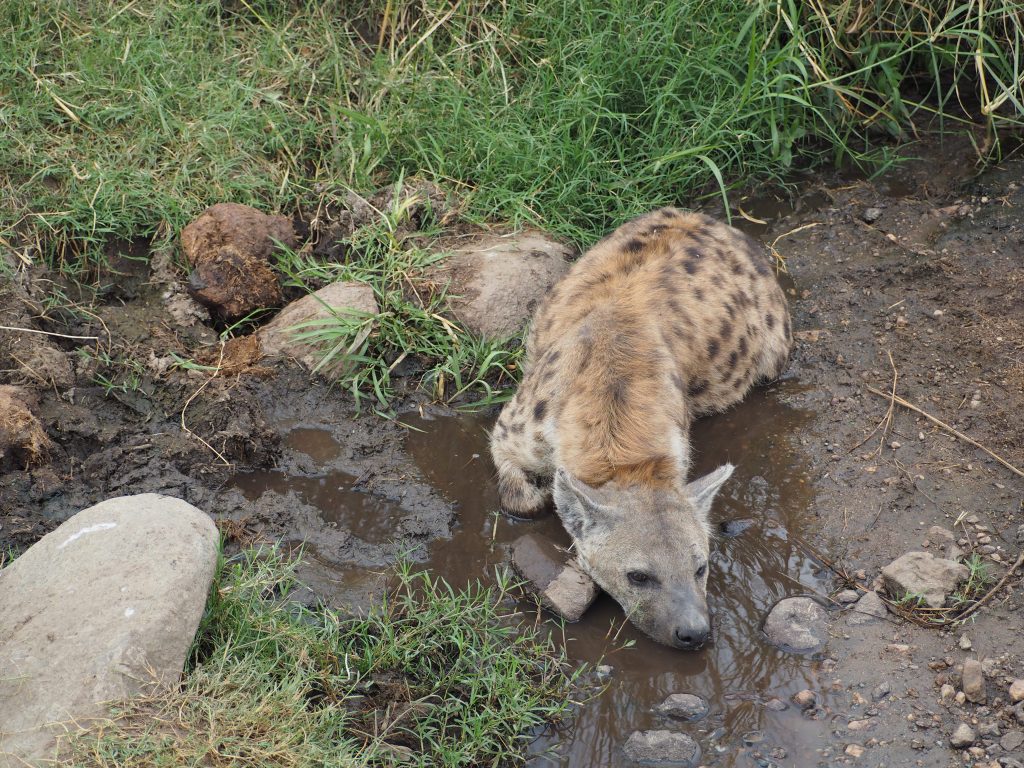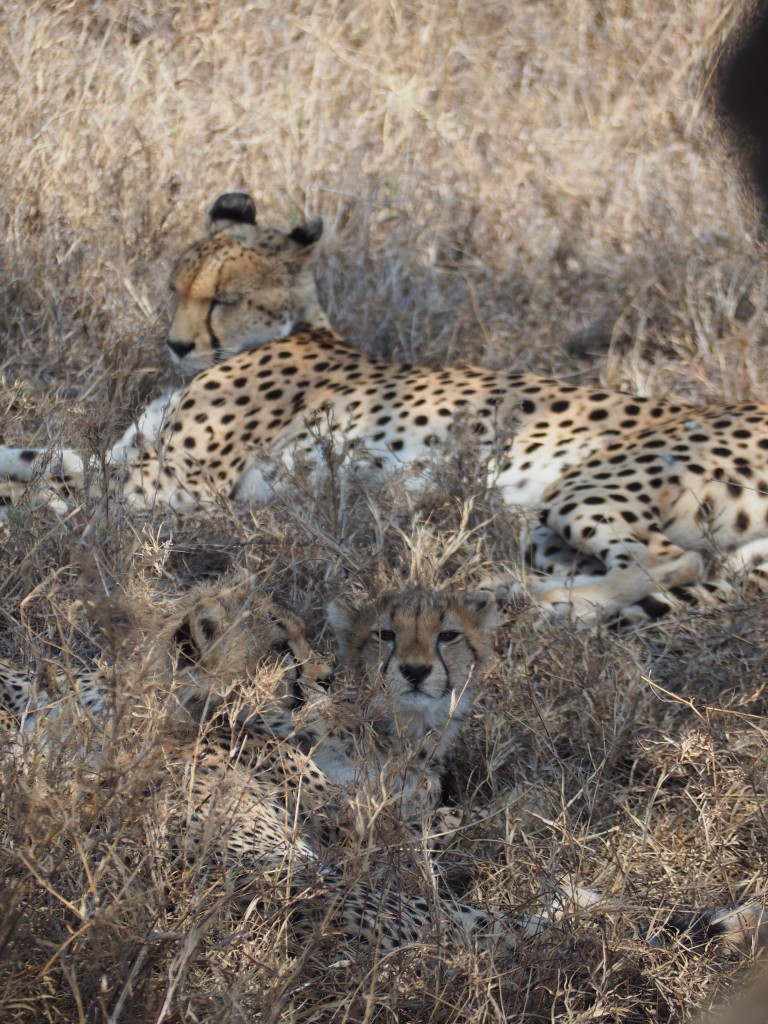Serengeti National Park is the second largest national park in Tanzania, with a total area of 14,750 km². The park’s name comes from the Maasai language in which it roughly means ‘endless plains’. The migration season in the park makes it a different experience based on what time of the year the park is visited. Our visit was in August, during the park’s dry season (July-September) when the Great Migration takes place in the north of the park while the Mara River is low.
Day 1 – Arrival
Driving into Serengeti from the south you initially drive through vast open plains with short grass. Due to the time of year it was very dry and dusty in this part of the park, causing hazy views as we drove through. The soil here is not good enough for much vegetation to grow.

Kopjes, or rock outcroppings, are great places to spot animals in Serengeti’s vast plains
Two different types of gazelle, Grant’s and Thompson’s, along with ostriches can be found feeding on the short grass in this area.

Grazing gazelle, Thompson’s on the left and Grant’s on the right
After passing through the main entrance you arrive at the Naabi Hill picnic area for a food and washroom break, while the driver takes care of permits/registration for the park. You can take a short hike up to Naabi Hill overlook after lunch (though the views are best during other seasons when there is more vegetation). There are also a couple souvenir shops, a coffee shop, and some information about the park.
Keep an open eye here- many birds and critters like to hang around the picnic area.

Starling 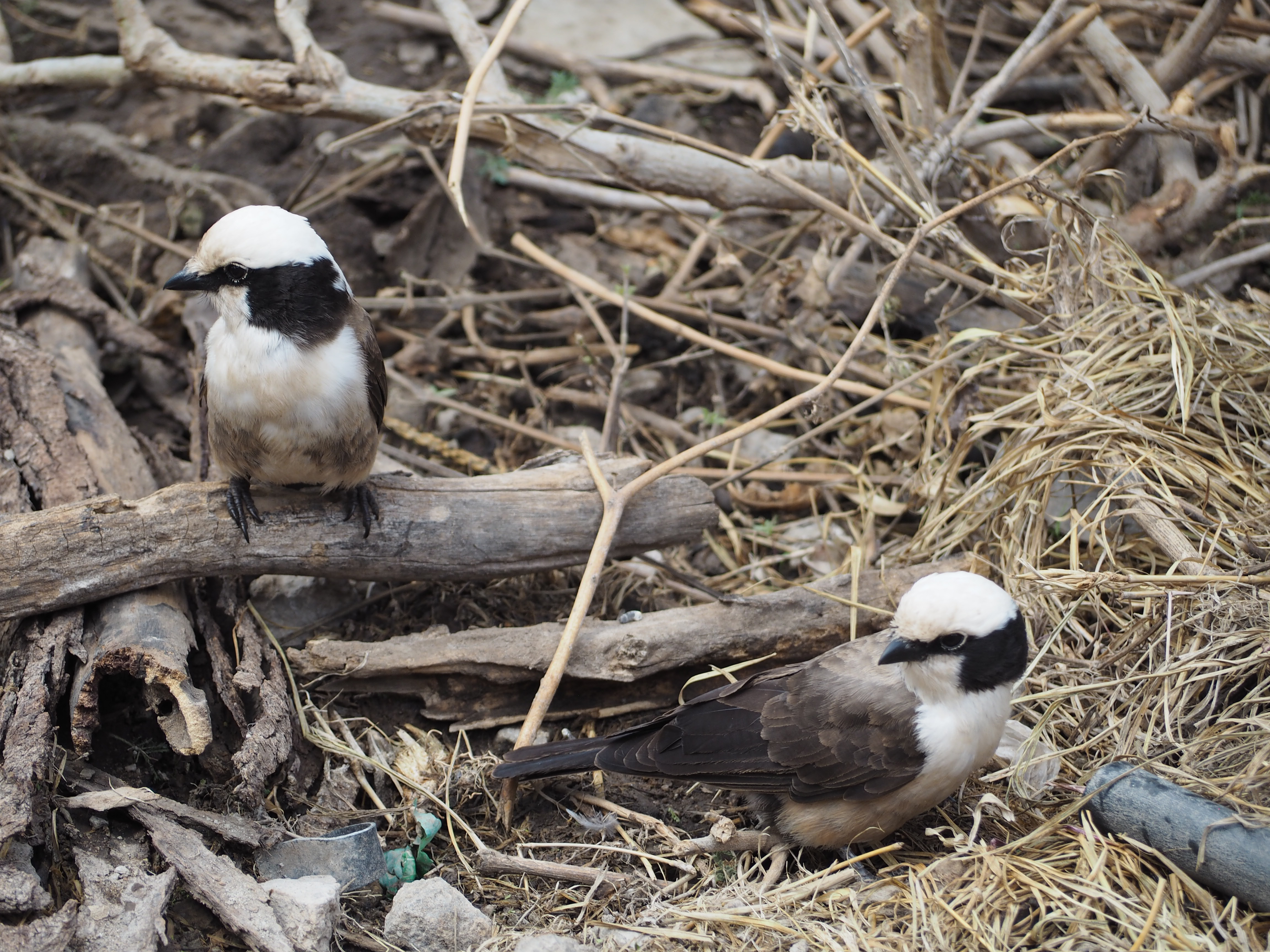
Northern white-crowned shrike 
Agama lizard
As you drive further into the park, more vegetation and taller grass start showing up. We had our first leopard sighting – far away in a tree, with its dead prey up there with it. Our guide had an amazing eye for spotting animals, even when very far away.

Can you spot the leopard?
There were many lions out and about, most of them resting and waiting for cooler evening weather.

Brother and sister 
Basking in the sun 
Young lions peeking out from the grass
We also saw hyenas, hartebeest, topi antelope, kori bustard, and Marabou storks.
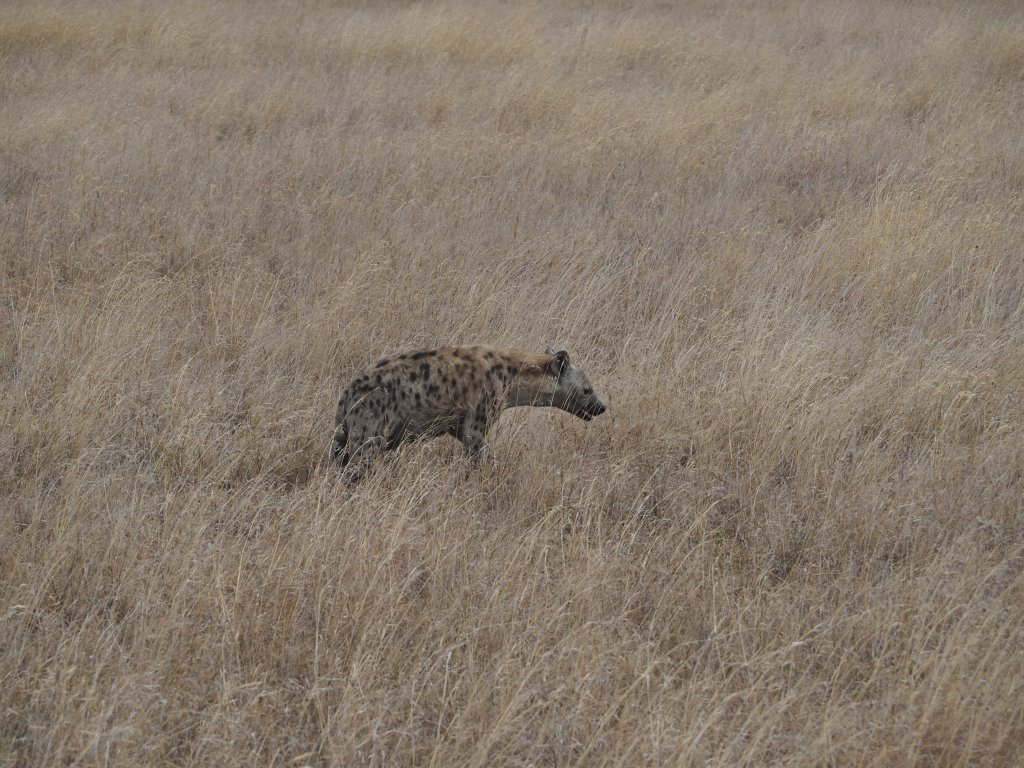
Hyena 
Kori bustard 
Hartebeest, an African antelope
Our last stop for the day before heading to camp was watching four cheetahs hanging out under a tree, a mom and three cubs.

Look closely – cheetah stretching under the tree

Heading to camp at the end of the day
The first night in Serengeti we stayed at Ang’ata camp in Seronera, the central part of the park. This camp has one large communal tent for the dining and lounge areas, with wi-fi and charging stations inside.
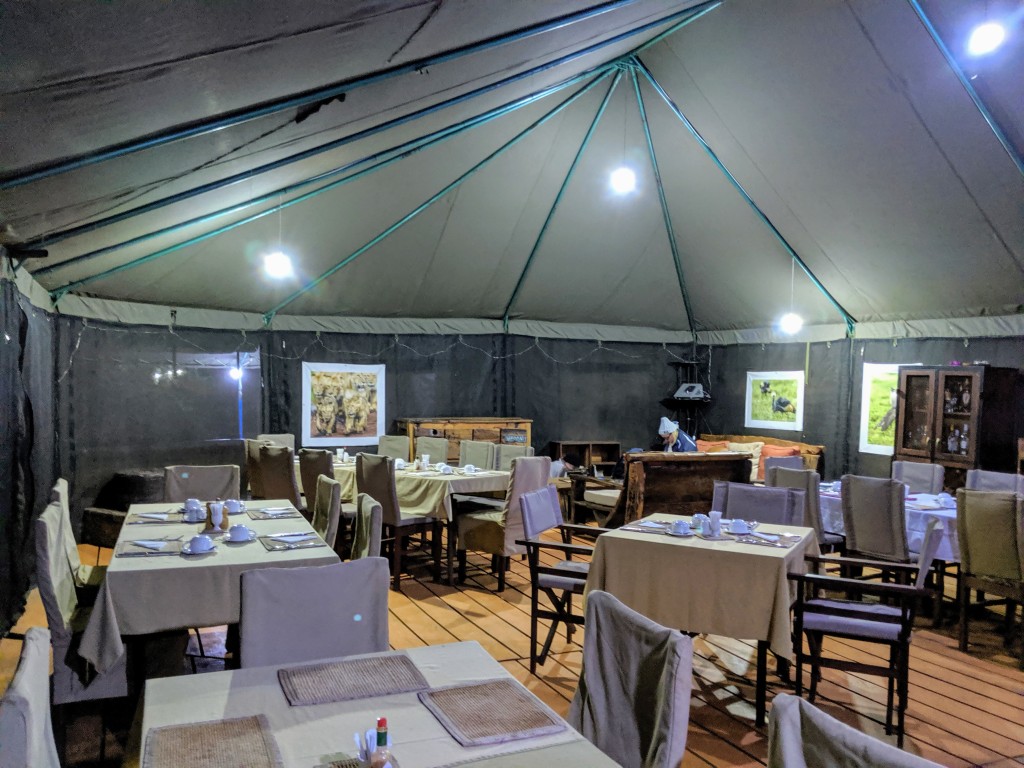
Dining area with a lounge section in the corner
The guest tents were very nice! The room bathrooms had showers and flushing toilets, water for brushing teeth or drinking, and included one outlet for charging devices.
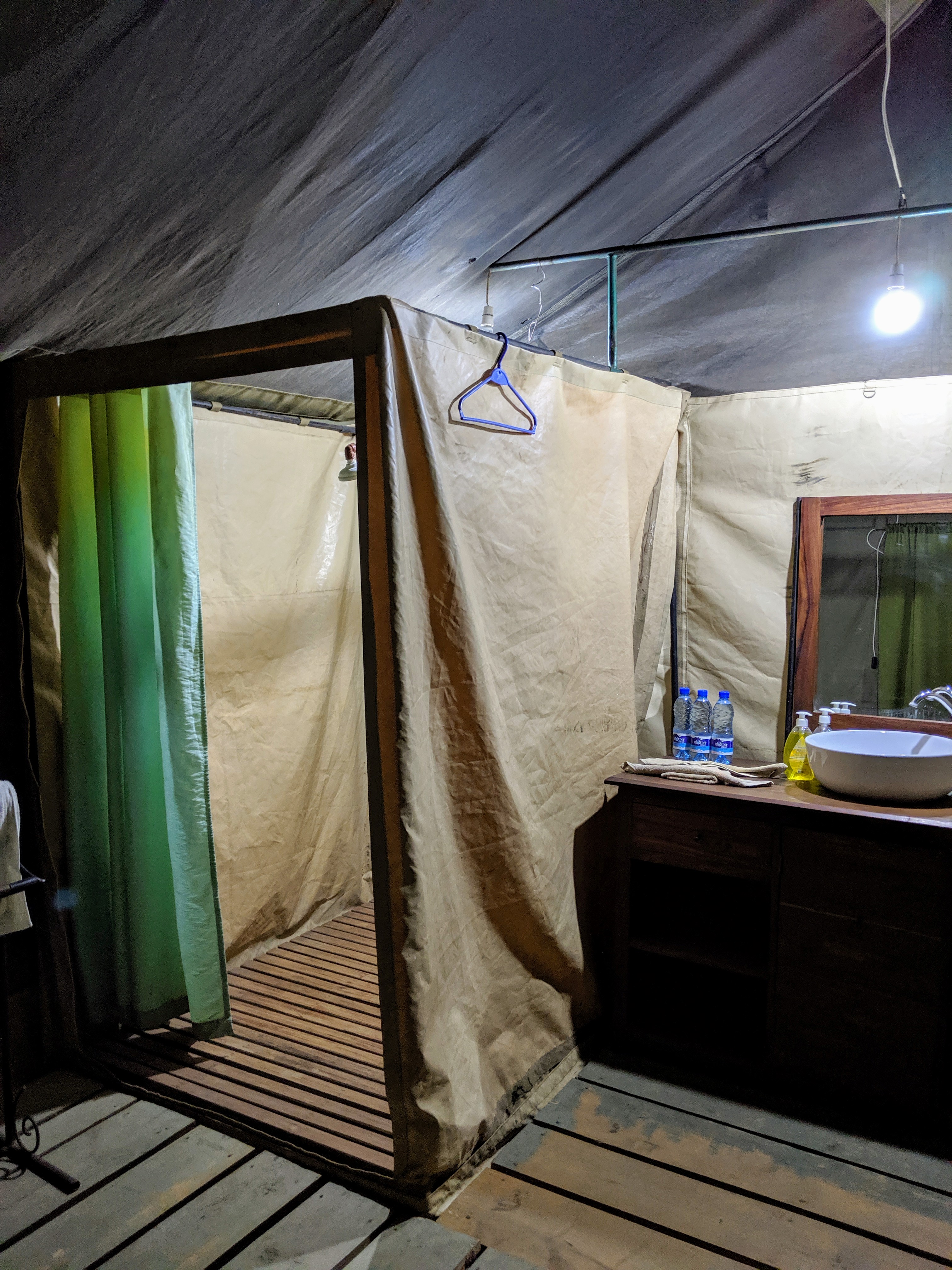
Shower & sink in the tent bathroom 
Bed with mosquito netting
Dinner at the camp started at 7:30 pm with spinach soup and a roll, followed by the main entree served buffet style: mashed potatoes, pork chops, a vegetarian curry, and vegetable rice. The vegetarians in our group got an extra bowl of sautéed mushrooms and broccoli, fried potato wedges as a vegan substitute for the mashed potatoes, and rice and corn flour pancakes as a gluten free bread substitute. Dessert was a banana tart, with pineapple and watermelon for the non-dairy option.
Day 2 – Seronera & Driving North
Our second day in Serengeti was an early start, leaving the campground at 6:15 in the morning, just prior to sunrise. We were taking advantage of the cool mornings to view animals while they were still more active, as most would be resting during the warm hours of the day. The first animal spot was a jackal sleeping on the side of the road – sorry for waking you up, buddy!

Good morning, jackal
We saw the beautiful sunrise while watching Marabou storks and baboons around the Seronera River, and then continued to search for larger animals.

Sunrise in Seronera
Our first longer stop was to view a mother leopard and her 3 month old cub up in a tree, along with their dead gazelle hanging from the branches. The cub was very active, walking around on the branches to see its mother and then climbing down the tree to walk around on the ground. We stayed long enough to see it climb back up into the tree – they are impressive creatures.
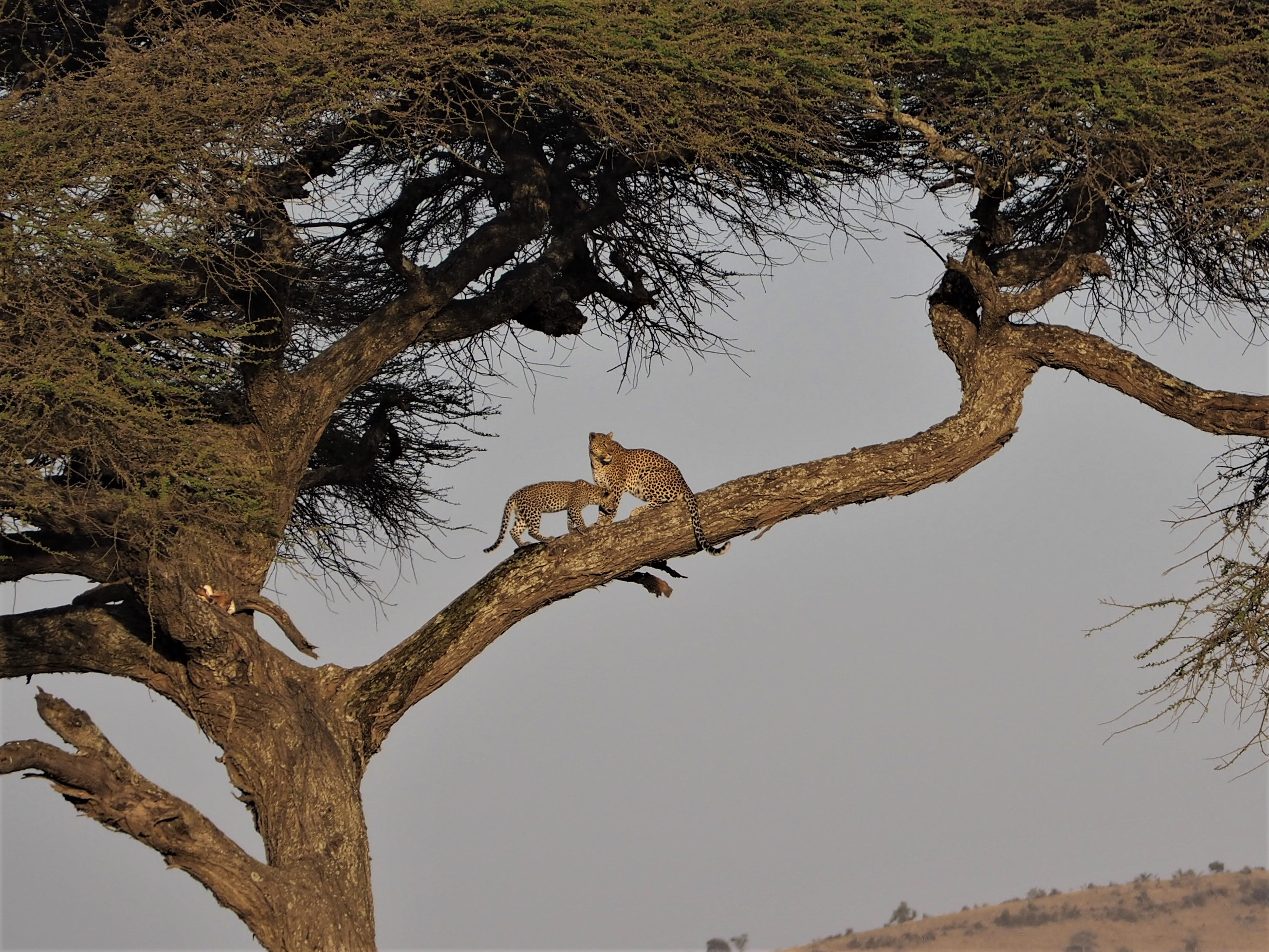
Enjoying the view from their tree
We had several lion sightings in the morning – some on the move as balloon safaris were taking off in the distance, a large pride near a picnic area (the pride included two males, several cubs, and one visible female), and two more lounging under a tree, including a collared female.
We saw a small herd of elephants that included two baby elephants, many giraffes, a reedbuck antelope, and lilac-breasted rollers.

Elephants are often spotted in large herds 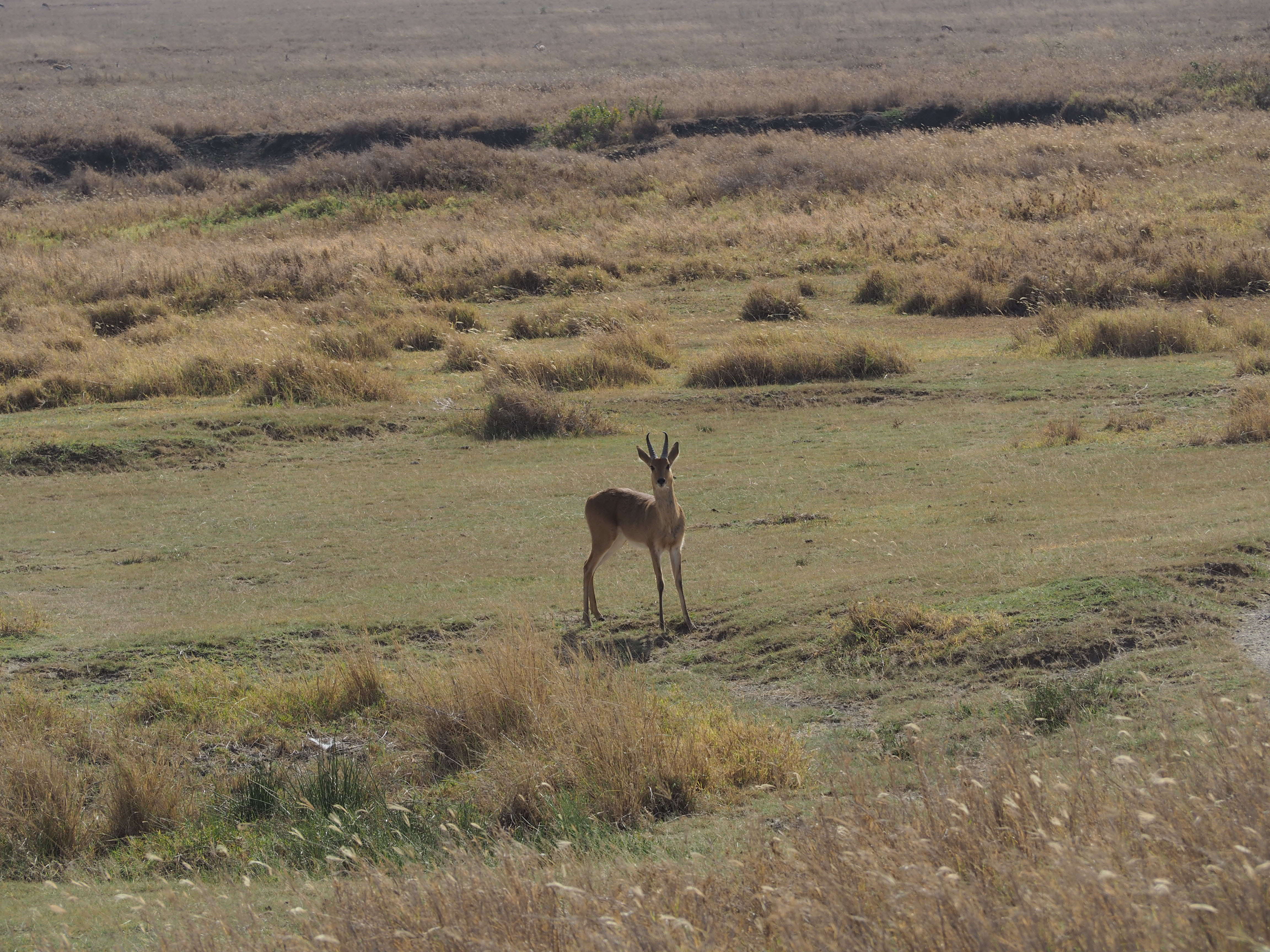
A solitary reedbuck 
Lilac breasted roller
We stopped back at Ang’ata camp for brunch instead of taking lunchboxes for the day. In keeping with the theme of eating a lot, we were served both breakfast and lunch! Breakfast included eggs made to order, sausages, pancakes, and the typical sliced fruit, cold cereal, and tea/coffee options. The lunch was buffet style with potatoes, mixed salad (tomato, cucumber, carrot, corn), chickpea and vegetable sauce, pasta, and beef balls.
The drive from Seronera to our northern camp took over 4 hours, with several stops along the way. The park got more mountainous, wooded, and green the further north we drove. We passed several herds of zebra, gazelle, antelope, wildebeest, buffalo, hartebeest, and others.
Our guide spotted a buffalo carcass on the side of the road with vultures picking at the remaining bones. We drove further off the main road and found over twenty lions resting in the shade of trees, digesting after consuming their buffalo feast.

Picked-over buffalo remains
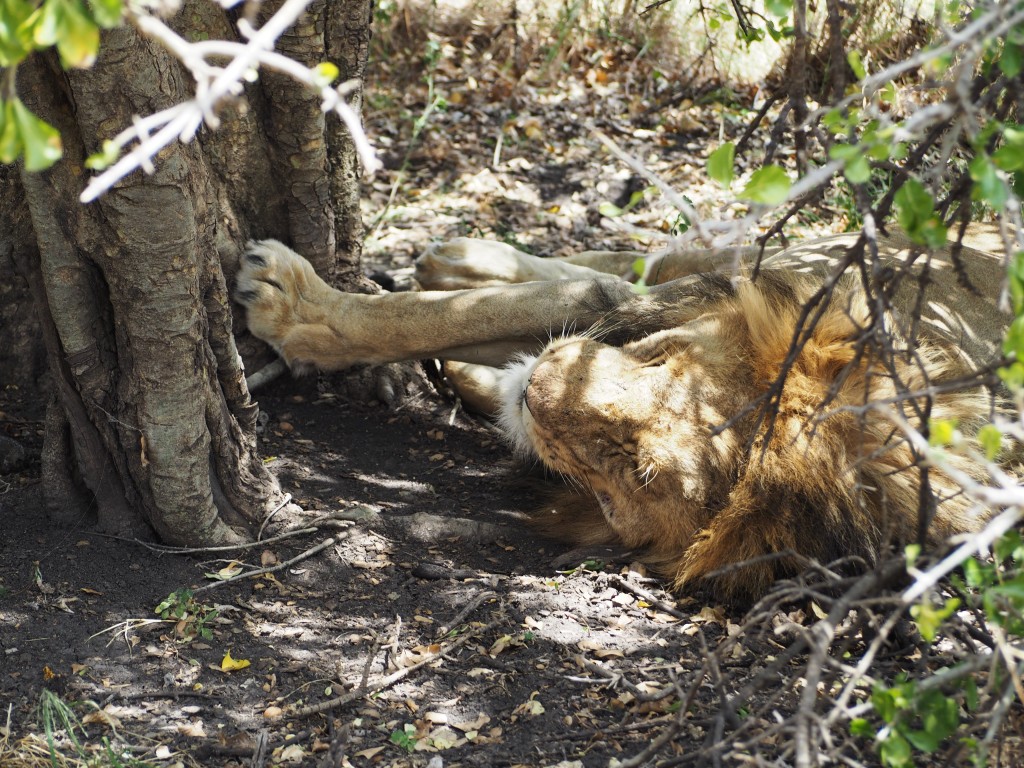
*yawn* 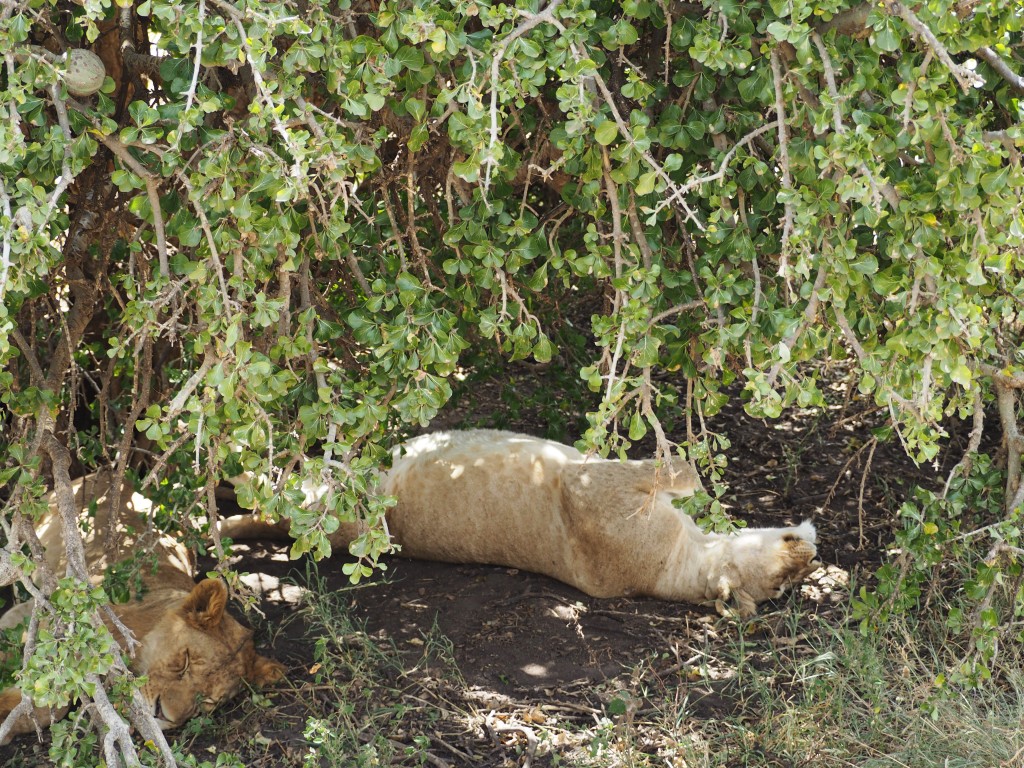
Definitely sleeping 
Look at these lazy lions! 
Zooming in – what do you think, comfortable or not?
We also had another leopard sighting! This one was closer to the road, sitting on rocks at the side of a river, awaiting its prey.
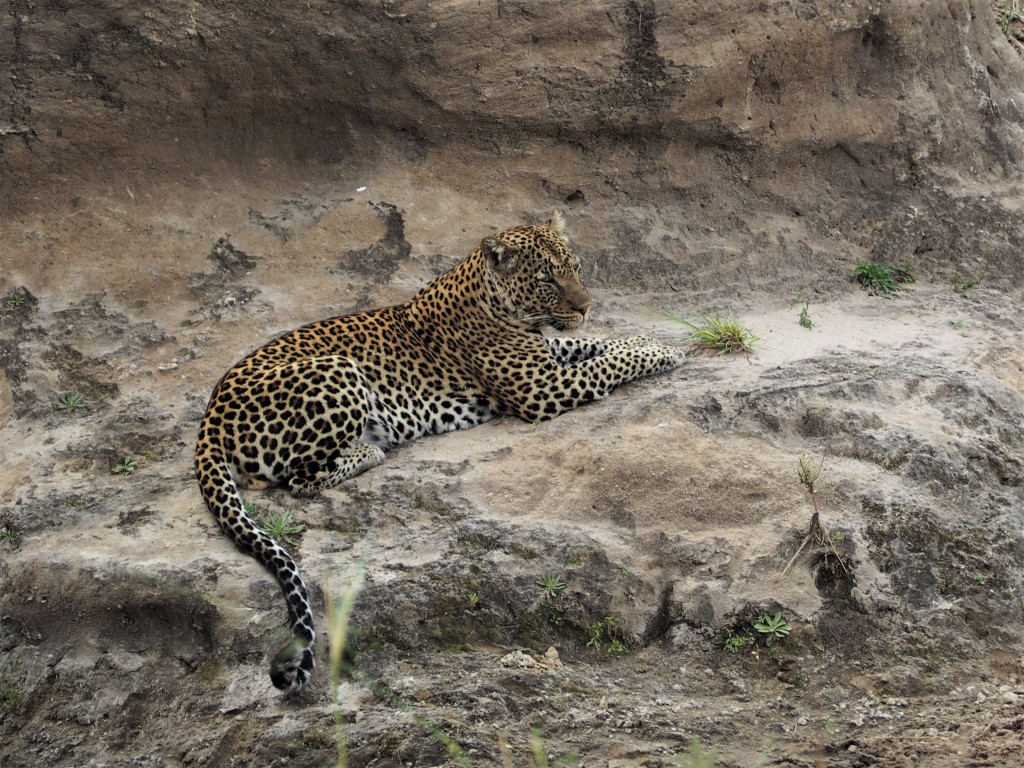
Waiting for prey to show up at the water
A group of elephants was drying off in the sun, with one young male still having fun in the water.
Other notable sightings included a secretarybird and a common eland, the largest of the antelope family.
We arrived at the beautiful Serengeti North Wilderness Camp, a migrating camp in the north of the park that moves south with the wildebeest migration. The camp has two communal tents, a lounge and a dining area, and 12 guest tents. Their lounge includes board games, books, wi-fi, and a charging station (the wi-fi here didn’t reach the rooms – great chance to disconnect!).
Dinner was served at 7:30 in the evening and included green banana soup (YUM) with a roll, avocado and bell pepper salad, sautéed vegetables (peppers, onions, cauliflower, broccoli), mushroom sauce, fried potatoes, and lamb stew. Dessert was a chocolate cake with chocolate sauce. Everything was delicious!
I spent the remainder of that evening browsing the lounge books on Africa’s birds and mammals, and playing a couple games of Jenga with my travel companions and the camp staff. They are fun company and very knowledgeable about the area!
Day 3 – The Great Migration
On day 3 we headed to the Mara river to see the Great Migration of wildebeest crossing the river. On our way there we stumbled upon two lions enjoying some freshly caught breakfast.
There were thousands of wildebeest everywhere! We found a spot to wait until they decided to cross the river; it didn’t take too long before the wildebeests started rushing across to the other side of the shore and later we even got an encore. Zebras also joined in on the fun.
Being by the river provided opportunity to see several crocodiles (including one dragging away a wildebeest carcass!) as well as hippos and elephants.

Crocodile in the water – this was a big one!
That morning we also had our first sighting of waterbucks in the park.
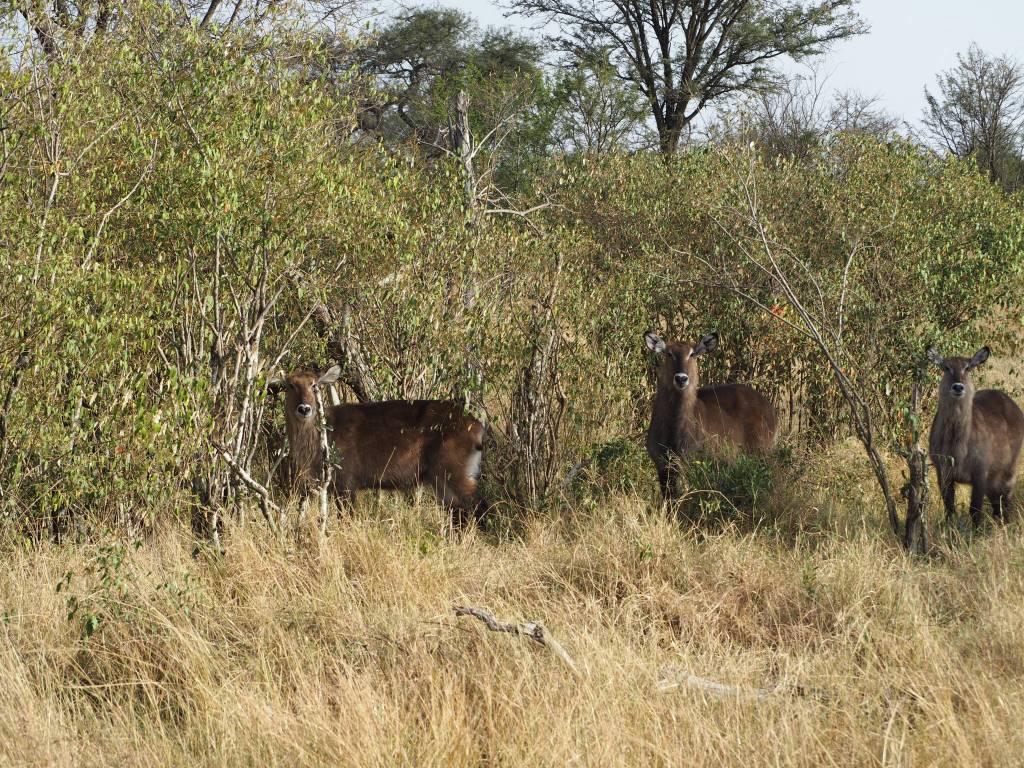
Staring contest with waterbucks
After an afternoon lunch break we got right back to it and drove north towards the Kenya border. Enjoying the shade of a tree were two cheetahs, brothers.
We briefly stepped foot into Kenya..

The border between Tanzania (Serengeti) and Kenya (Maasai Mara National Reserve)
Driving along the river provided for seeing more greenery and animals enjoying the provided feast.
The sunset in the evening was beautiful and enjoyed by the campfire, sharing safari stories with other guests in the camp.
Dinner in the evening was tomato soup, sautéed green beans and carrots, cabbage, beef stew, and mushroom sauce – delicious as always. The zebra and wildebeest were very active that night in the camp – I could hear them running right outside the tents!
Day 4 – Back to Seronera
Our fourth day in Serengeti was spent game driving south from the northern side of the park to central Seronera. We saw the usual suspects throughout the drive – zebra, wildebeest, impala, gazelle, antelope, buffalo, lions, giraffes – and many more!
We had our first sighting of a klipspringer antelope, perfectly situated on top of a rock.
We visited our lazy lion friends again, still full from eating the buffalo carcass we came across on our drive up north (they eat every 5 or so days when they have large enough meals).
For lunch we stopped at a picnic area next to a hippo pool. There were over 100 hippos laying all over one another and making their funny noises.
Once we arrived back in the Seronera area we drove by the river to view animals taking advantage of the available water. Giraffes, elephants, and hippos were out and about.
One hyena got it’s hands on a piece of hippo flesh that it was not sharing with its friends.
We stayed at the Ang’ata campground again and had a great dinner as usual – potato soup, carrots & green beans, chicken curry, rice, beans for vegetarians, and a banana fritter dessert.
Day 5 – Last Day in Serengeti
For our last morning in Serengeti we had another early start, departing the camp at 6:15 am to catch the animals active in the morning cool weather. It truly paid off! Very soon after watching the beautiful sunrise we came across two lions, a female and a male, attempting to hunt gazelle.

Serengeti sunrise
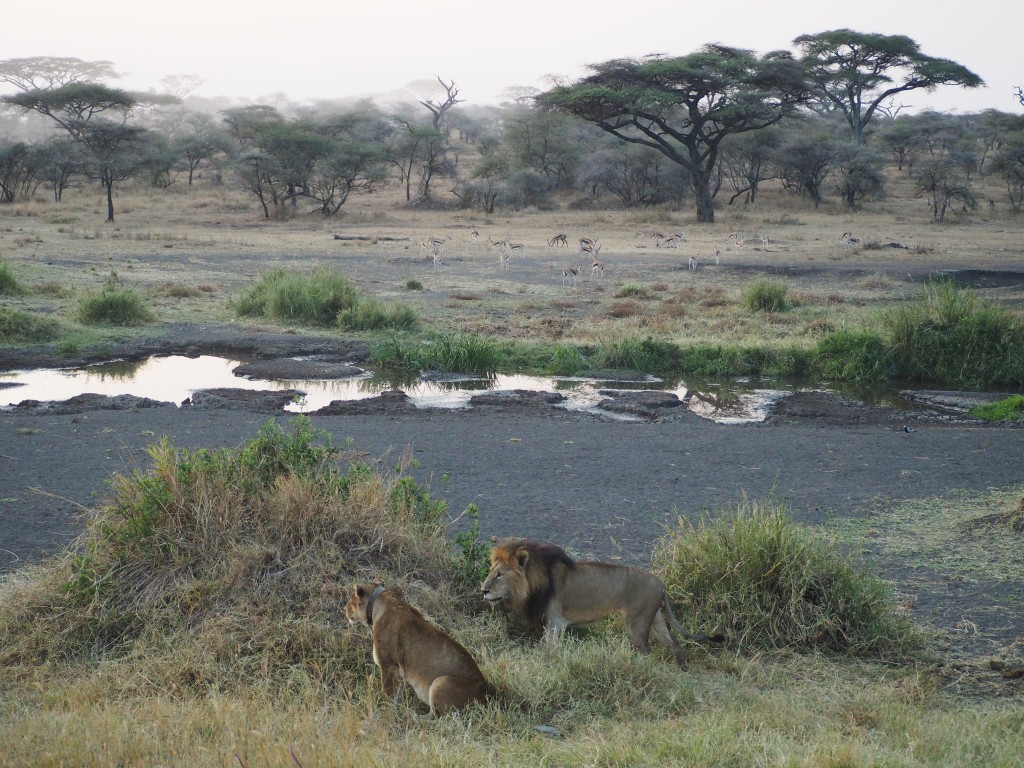
On the hunt
Driving a bit further we found a mother lioness with her 4 small cubs, no more than 6 weeks old. She was attempting to ferry them across a muddy stream but it proved to be a difficult task, as not all the cubs were following at the same time and some were not willing to brave the mud. Watching them was certainly a highlight of the day!

Leading the kids cross the mud 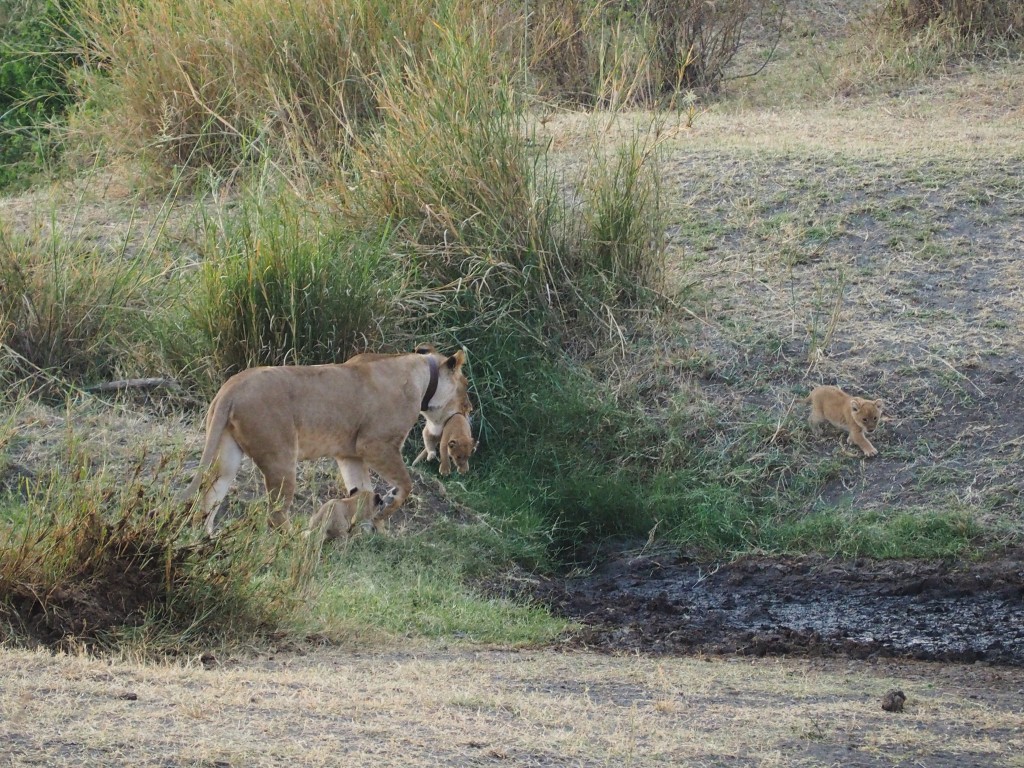
Waiting for the little guy to cross the stream
Our morning game drive continued with watching a hippo walk around and settle himself into the water for the day, and also spotting a white billed bustard.

Hippo heading to spend the day in the water
We returned to camp Ang’ata to have breakfast and pack. Once ready, we continued the game drive as we headed back to Naabi gate towards Ngorongoro Conversation Area. The most exciting find of the drive was a mother cheetah with two cubs.
Aside from the usual we also had two more lion sightings and right before departing from Serengeti we also saw a tawny eagle.

Can you spot the third lion in this photo? 
Enjoying the water 
Tawny eagle on the side of the road
Serengeti is truly an amazing park – highly worth a visit!

Serengeti’s south entrance gate

